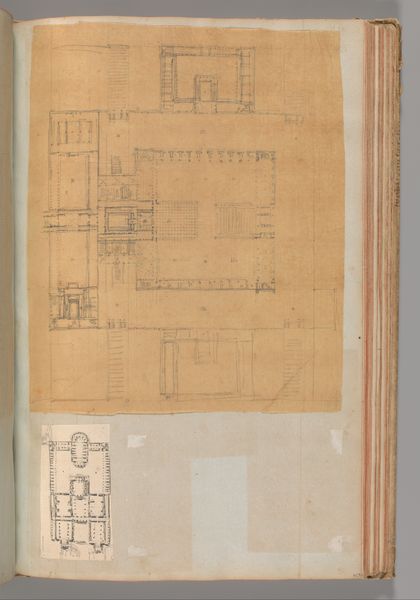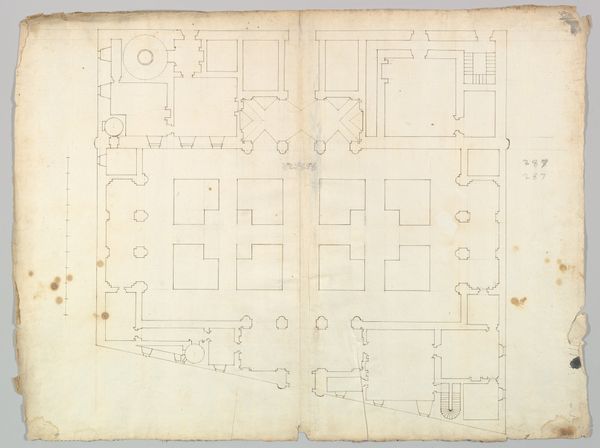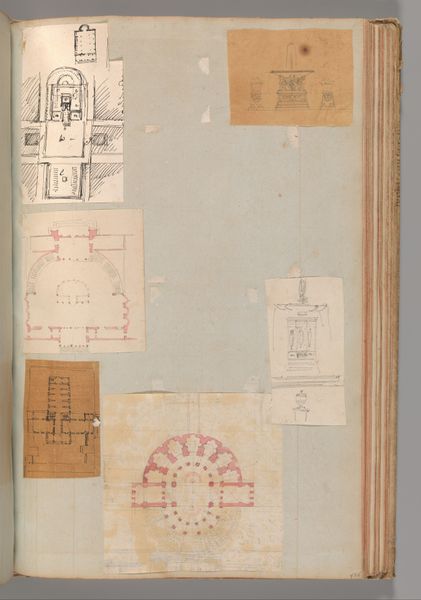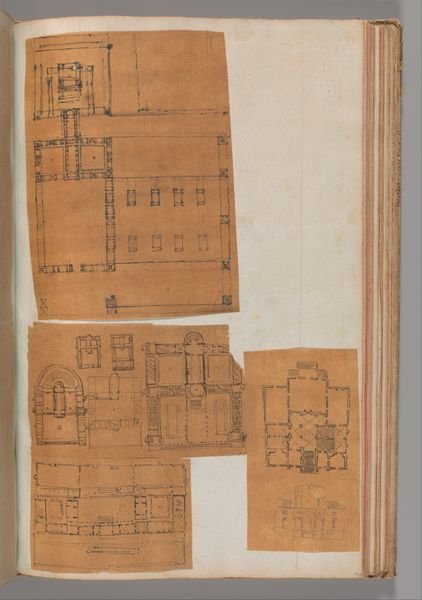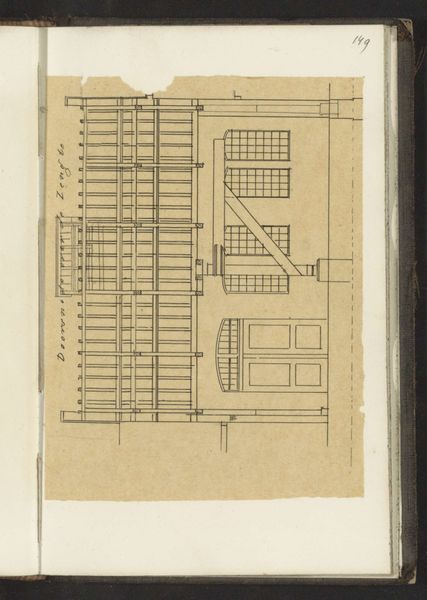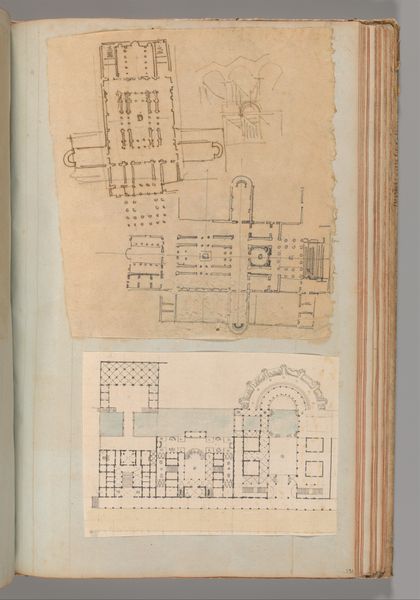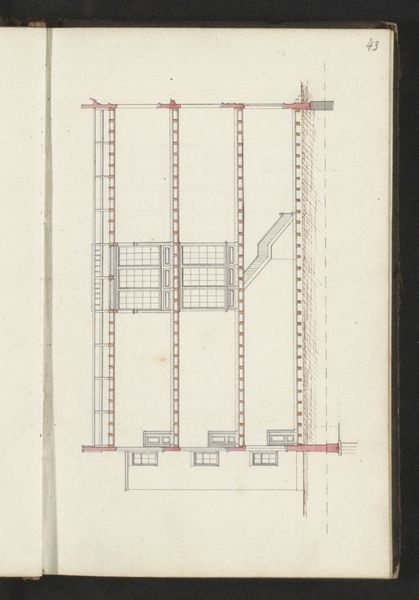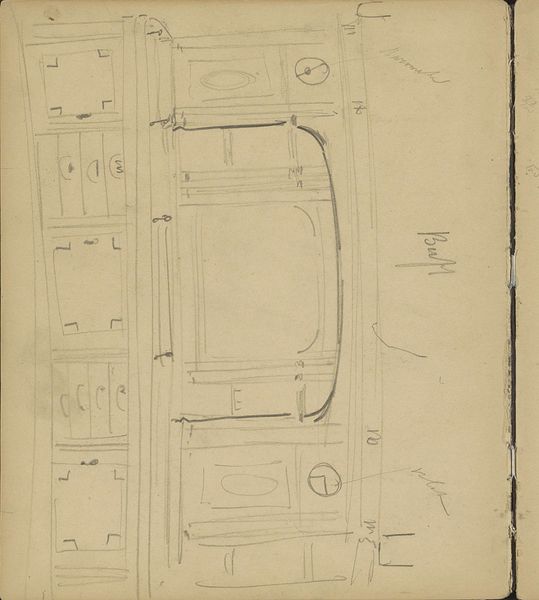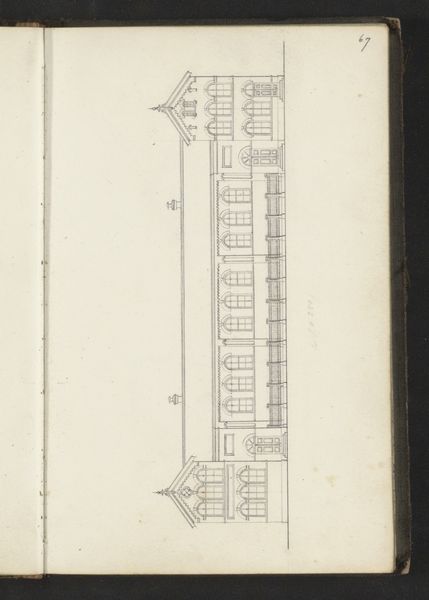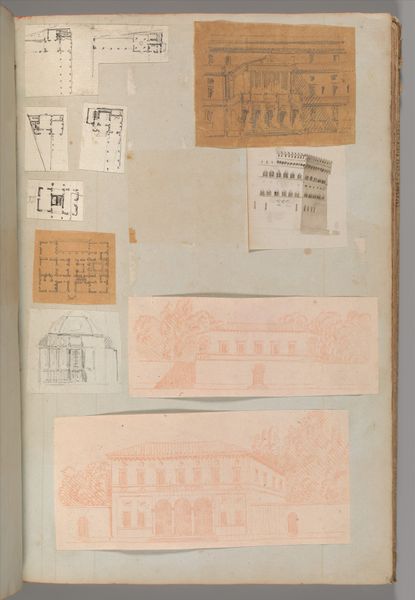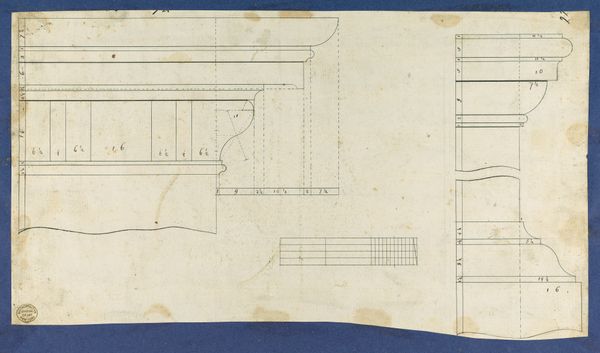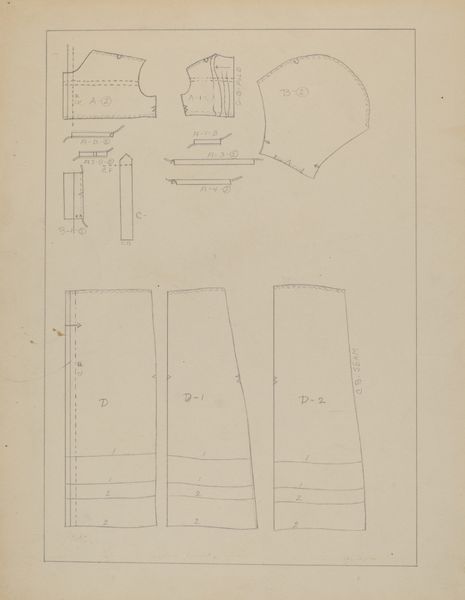
Page from a Scrapbook containing Drawings and Several Prints of Architecture, Interiors, Furniture and Other Objects 1795 - 1805
0:00
0:00
drawing, print, paper, architecture
#
drawing
#
neoclacissism
# print
#
paper
#
architecture
Dimensions: 15 11/16 x 10 in. (39.8 x 25.4 cm)
Copyright: Public Domain
Editor: So, this is a page from a scrapbook, dating back to around 1795-1805, filled with architectural drawings and prints by Charles Percier. It feels incredibly technical, like looking at blueprints. What stands out to you in this work? Curator: What I find fascinating is the very act of assembling such a scrapbook during this period. The late 18th and early 19th centuries were a time of intense social and political upheaval. Think about the French Revolution and the rise of Napoleon, both of which deeply impacted design and architecture. Percier's neoclassical style reflects a desire for order and stability, almost as a response to the chaos. Editor: So, the act of compiling these serene architectural drawings into a scrapbook was a statement in itself? Curator: Precisely. Scrapbooks in this era became spaces for personal expression, but also for asserting control over the representation of one’s world. Consider the political implications of neoclassical architecture, with its emphasis on Roman virtues of order and republicanism during the rise and fall of empires. Editor: It's interesting how design choices can reflect the political landscape so directly. Is there a specific element on this page that really speaks to that tension? Curator: Look at the precise, almost sterile lines. These drawings aren't just about aesthetics; they're about power, control, and the assertion of a specific, often idealized, vision of society. The symmetry, the order - it all contributes to this feeling of a desire for an ideal world in a tumultuous time. How might the built world reinforce societal hierarchies or provide possibilities for more democratic modes of living? Editor: I hadn’t considered it that way before. It really gives the page a new layer of meaning. Curator: Exactly, and understanding that historical and social context really allows us to unpack the broader narrative embedded within Percier’s choices.
Comments
No comments
Be the first to comment and join the conversation on the ultimate creative platform.
